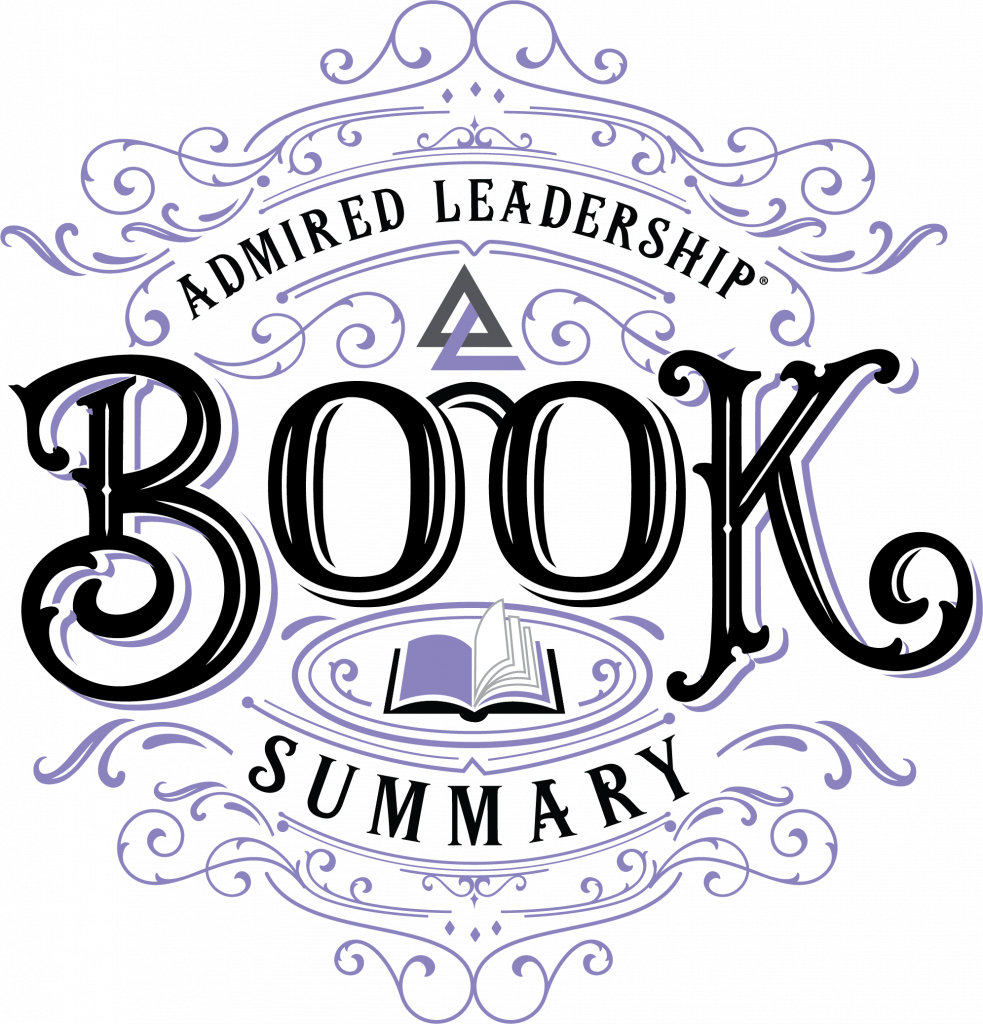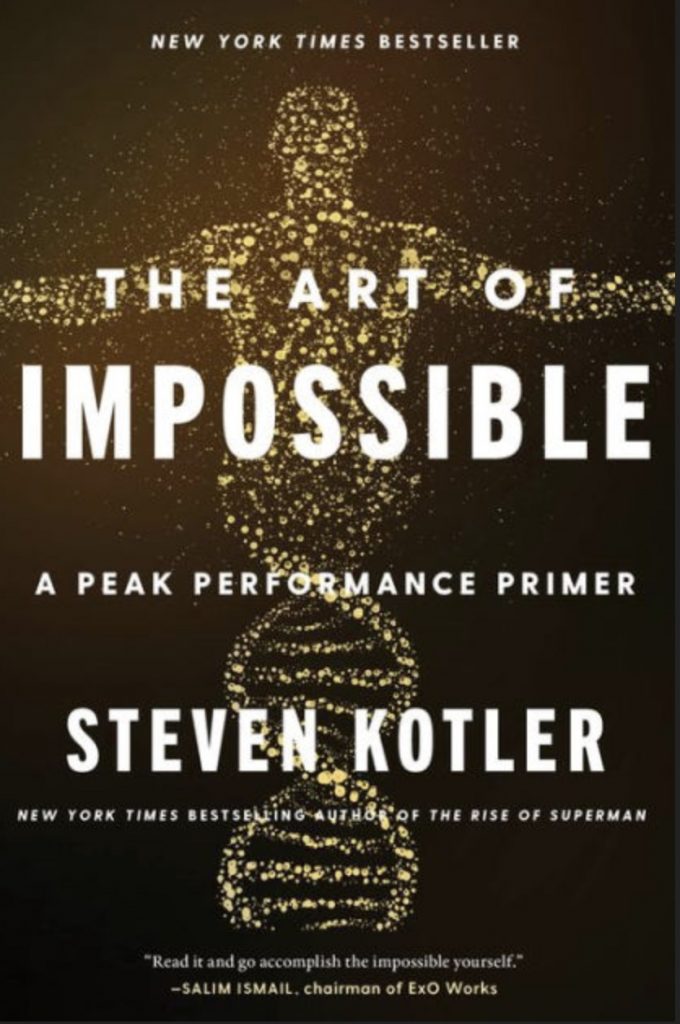Key Quote:
“Dividing up the impossible into a long series of difficult but doable goals, that, if accomplished, render said impossible much more probable.” (p. 55) — Steven Kotler
Key Points and Concepts
Subsets of Motivation
A person’s motivation is divided by psychologists into three skill subsets: Drive, Goals, and Grit.
Drive is comprised of emotional motivators that automatically influence our behavior. Examples of these motivators include “curiosity, passion, and purpose.” (p. 18) “When we’re curious about a subject, doing the hard work to learn more about that subject doesn’t feel like hard work” (p. 18).
Goals are used as an outline to determine what we are trying to accomplish. By setting goals we can achieve our mission faster than we would without setting them. “Since the road to impossible is long by definition, we’ll need this boost in acceleration to achieve our mission” (p. 18).
Grit is typically confused with motivation as a whole. Simply defined, grit is “the ability to continue with the journey no matter the difficulty involved” (p. 18).
The Psychology of Drive
Drive from an evolutionary perspective boils down to the human’s quest for gathering resources. There are two strategies in this pursuit: “Either you fight over dwindling resources, or you get creative and make more resources” (p. 19).
Psychological drivers are split into two categories: extrinsic and intrinsic. Extrinsic drivers are external motivators such as money and fame. Intrinsic drivers as psychological forces made up of curiosity, passion, meaning, purpose, mastery, and autonomy.
Researchers have found that extrinsic motivators are effective until we reach a state of security, after which “Happiness becomes untethered to income because, once we meet our basic needs, the lure of all the stuff it took to meet them begins to lose its luster” (p. 21)
The Full Intrinsic Driver Stack
In the pursuit of impossible, our five most important intrinsic drivers are “biologically designed to work in conjunction” (p. 41) to carry us through the long game.
Curiosity is our “basic interest in something” which serves as a “foundational ingredient in passion” (p. 27).
Meaning and purpose “require connecting our individual passion to a cause much greater than ourselves.” (p. 27) A “massively transformative purpose” (MTP) is the impossible goal that we seek out to conquer.
Autonomy is a type of motivation where “you’re doing what you’re doing by choice” (p. 43).
Mastery is our “desire to get better at the things we do” (p. 48).
Setting Goals
Goals are the roadmap that lead us exactly where we need to go in order to achieve the impossible. “Dividing up the impossible into a long series of difficult but doable goals, that, if accomplished, render said impossible much more probable.” (p. 55) Philosopher Aristotle was a proponent of setting goals and considered them to be an important driver for change in the world.
High, Hard Goals (HHGs) are the big goals that take place along the way to achieving an MTP. In order for HHGs to be successful, we must believe in the cause that we are following. “Big goals work best when we’re passionate about the subject of the goals (the idea that surrounds it) and its end result (the bigger purpose the goal serves)” (p. 60).
Clear Goals are the smaller, “daily sub-steps required to accomplish” (p. 61) high, hard goals. While high, hard goals take years to achieve (Ex. Graduating college), clear goals are daily tasks (Ex. Hitting a writing quota for the day). By developing daily to-do lists, goals work as a flow trigger, focusing our attention to the task at hand.
Developing Grit
Grit is motivation writ large – not just the energy it takes to push through a difficult task but the energy needed to push through years of difficult tasks” (p. 65).
Perseverance is the version of grit with which we are most familiar. Studies have found that the combination of passion and perseverance are twice as important to academic success as IQ. Persistence is made up of three psychological traits: willpower, mindset, and passion.
Grit is required to control our own thoughts from boredom and frustration taking over. By limiting “constricting thoughts” (Ex. “I cannot handle this task.”), showing gratitude for things in our life, and remaining observant of life’s challenges, our mental health improves over the long-run.
Befriend our fears. Learning to confront our fears and recognize its sensation makes fear dissipate. This can be done either slowly, called systematic desensitization, or at once, called flooding.
Recovery is an important factor in accomplishing the impossible. While it may seem counterintuitive to take time to rest and recover, it requires grit to incorporate recovery. Without recovery, burnout leads to exhaustion, depression, and cynicism, which in turn lead to “significant decline in cognitive function” (p. 94).
Growth Mindsets and Truth Filters
A growth mindset allows us to “Believe talent is merely a starting point and practice makes all the difference.” (p. 71) Having this type of mindset saves us time, allows us to reflect on opportunities for learning, and reduces our emotions during the learning process.
Truth filters help “us to assess and evaluate what is being learned.” (p. 110) Properly evaluating the information we receive is a vital part of the learning process. By trusting our work’s information, anxiety and cognitive load levels reduce.
Growth Mindsets and Truth Filters
Emotional intelligence (EQ) describes “our ability to accurately perceive, express, appraise, understand, and regulate emotions, in ourselves and others.” (p. 144) EQ is broken down into four sub-categories: Self-awareness, self-management, social awareness, and relationship management.
Self-Awareness: The understanding of our own feelings and emotions
Self-Management: Taking responsibility for our own behavior
Social Awareness: Comprehension of both interpersonal struggles and overarching societal problems
Relationship Management: “Interpersonal communication skills” (p. 146).
Long Haul Creativity
Long-haul creativity requires creatives to sustain their creativity levels over the course of a career.
Daily exercise aids the creative process by lowering our anxiety levels and clearing the head.
“Creativity isn’t a single battle; it’s an ongoing war.” (p. 196) To carry momentum through this “ongoing war,” pause the creative process at peak excitement. This strategy allows us to pick our work back up from a familiar spot. Author Ernest Hemingway was a proponent of this method.
Frustration is a part of the creative process. Learn to embrace frustration as a “deep sense of what-if, and can-I-make-it-better” (p. 199).
Flow Triggers
Flow is “an optimal state of consciousness where we feel our best and perform our best.” (p. 10) This state of flow impacts our physical and mental ability. Triggers of flow push either norepinephrine or dopamine, two types of neurochemicals, into our brain, freeing up energy for attention to our goal.
“Internal triggers are conditions in our inner, psychological environment that create more flow.” (p. 234) Setting clear goals, keeping complete concentration on a task, and receiving immediate feedback that keeps ourself fully present are all examples of internal triggers.
External triggers are triggers in our environment that drive us into flow. “High consequences” are the risks and threats arising in our environment. These potentials for risk are the root of adrenaline rushes in our system. “To reach flow, one must be willing to take risks. The lover must lay bare his soul and risk rejection and humiliation to enter this state” (p. 246).
Creative triggers are based on pattern recognition and risk taking. To achieve more flow, we must load our brains with raw information for pattern recognition, tackle problems from new perspectives, and make creativity a part of our lives.
Flow has two varieties: individual and group. Social triggers help guide group flow, many of which derive from individual characteristics. These include shared, clear goals among a group, familiarity in order to understand common language throughout the group, and a sense of control, i.e., “autonomy with competence” (p. 254).
The Flow Cycle
Flow is a four-stage cycle. We must pass through each stage before moving on to the next step, without skipping any.
Stage One: Struggle: As previously discussed, frustration is a key part of learning. This struggle phase overloads the brain with information, causing unavoidable unpleasantness. “Frustration is a sign that you’re moving in the right direction.” (p. 259) (Ex. An engineer going through an outline of the problem, potential outcomes, etc.)
Stage Two: Release: “Release is an incubation period. It’s about allowing the brain’s pattern recognition system to chew on the problem for a while.” (p. 262) This stage calls for low-grade physical activity while we take our minds off the problem that we are looking to solve. This physical activity should not drain the energy that will be required later for solving the problem.
Stage Three: Flow: While in the state of flow it is critical to avoid “flow blockers” that can kick us out. The four blockers are distraction, negative thinking, nonoptimal arousal, and lack of preparation. “Nonoptimal arousal” refers to having the energy to maintain flow, which requires proper nutrition, recovery, sleep, and exercise. “Lack of preparation” refers to automatizing our key mental and physical skills that will be used during flow.
Stage Four: Recovery: As flow is a high-energy state, it requires a recovery phase on the back end. Healthy sleep schedules and an active recovery protocol are vital for the recovery phase. The recovery phase can be used to our advantage. “In recovery, with feel-good neurochemistry gone and the inner critic back online, we’re in the perfect mind-frame to vet those possibly great ideas” (p. 268).
Kolter, S. (2021). The Art of Impossible: A Peak Performance Primer. New York: HarperWave.

Drive from an evolutionary perspective boils down to the human’s quest for gathering resources. There are two strategies in this pursuit: “Either you fight over dwindling resources, or you get creative and make more resources.”
Creativity isn’t a single battle; it’s an ongoing war.” To carry momentum through this “ongoing war,” pause the creative process at peak excitement. This strategy allows us to pick our work back up from a familiar spot. Author Ernest Hemingway was a proponent of this method.
Flow has two varieties: individual and group. Social triggers help guide group flow, many of which derive from individual characteristics. These include shared, clear goals among a group, familiarity in order to understand common language throughout the group, and a sense of control, i.e.,
“autonomy with competence.”
